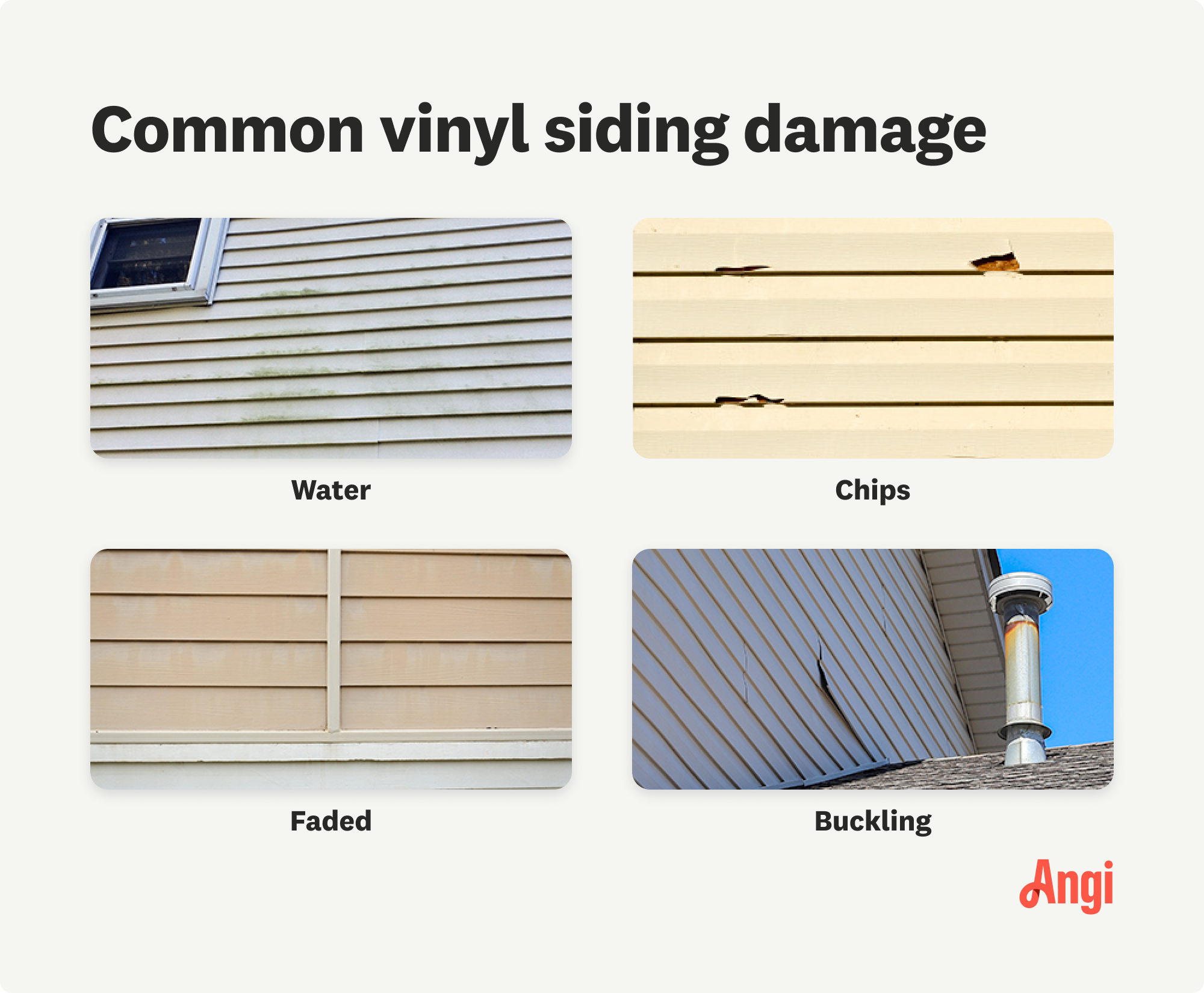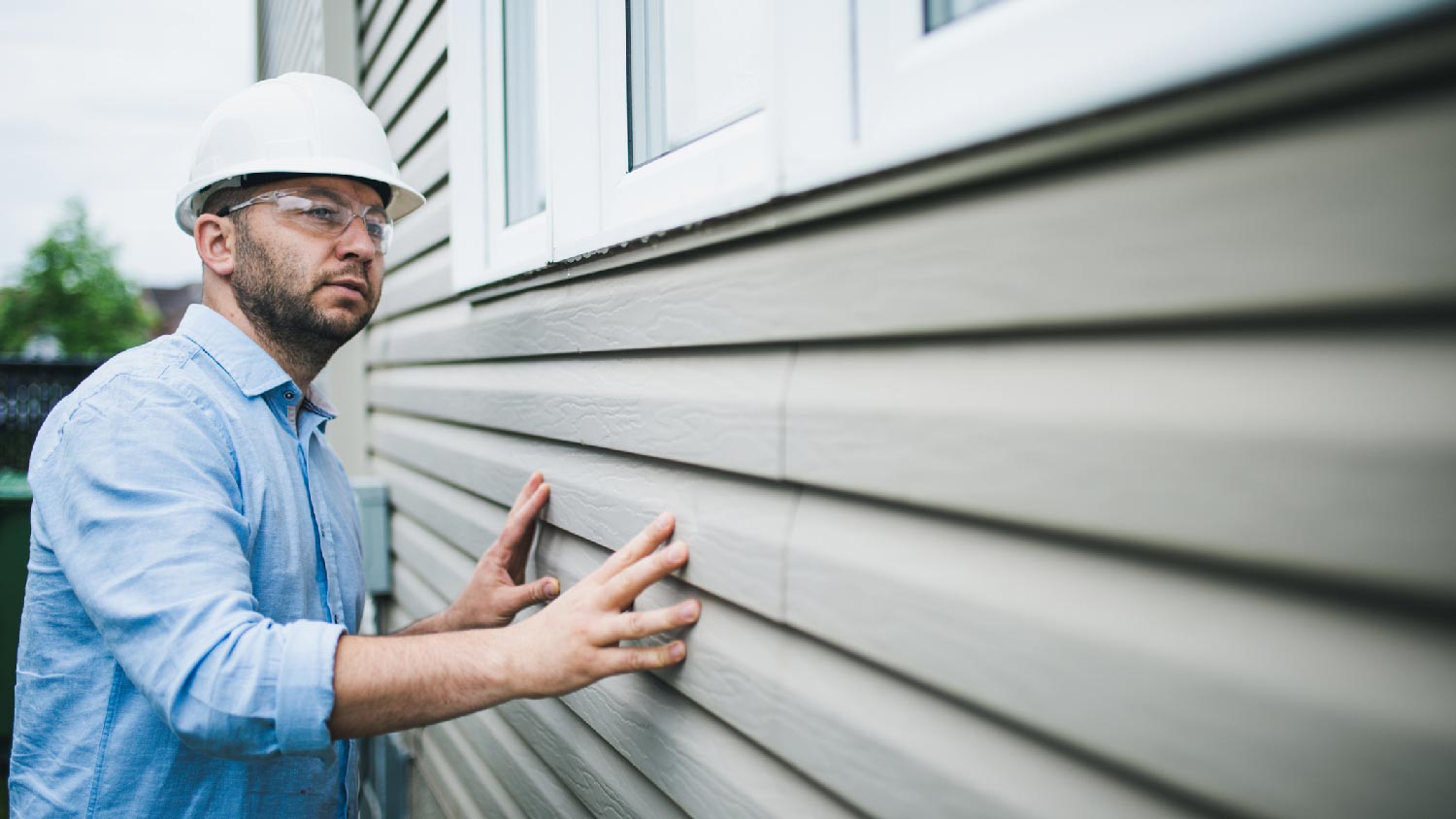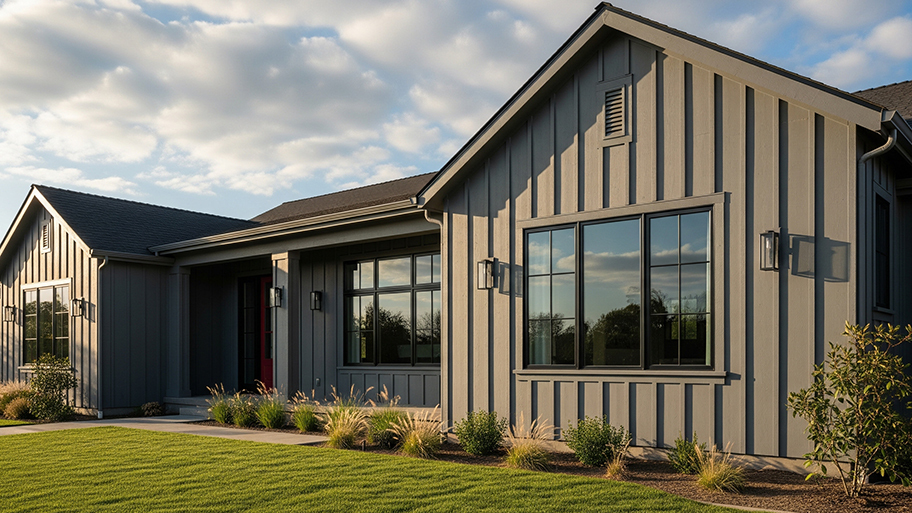
Wood siding repair costs depend on the size, material, repair type, and more. Keep reading to learn more about siding repair budgeting.
Giving it to you straight about why your vinyl siding is wavy


Wavy siding is the product of warping and buckling.
Incorrect fastener placement can lead to warping when panels expand and contract with the weather.
While rare, wavy siding can sometimes start all the way down at your home's foundation.
Excessive heat from grills or intense sunlight can cause vinyl siding to warp, leading to waviness.
You may need to replace portions of wavy vinyl siding, which costs $2 to $4 per square foot.
Have you found yourself asking recently, why is my vinyl siding wavy? If you're noticing wavy-looking siding, you could be waving hello to a big problem at your home. Wavy vinyl siding often occurs due to incorrect installation, but intense sunlight or heat from a nearby barbecue or fire pit could also cause the problem. Understanding the underlying cause and how to fix it can help you restore your home’s curb appeal quickly and avoid the issue going forward.
Contact a pro to diagnose any potential damage to your home's siding, as they may be able to identify damage that is difficult to spot.
Improper installation is the most common cause of wavy vinyl siding. If your siding contractor doesn’t cut panels with enough room to allow for expansion, the vinyl won’t be able to stretch laterally the way it's supposed to once temperature fluctuations cause it to expand. This will cause the ends to butt up against the trim, and when there’s no room left to expand, it will bow outward.
It's not always easy to determine if improper installation is the cause of wavy siding. However, one trick is to test the siding's "tightness" by giving one of the panels a wiggle. If the panel can't move about half an inch horizontally, the pieces may be too long to allow for proper expansion.
Nearly all types of vinyl siding feature oval-shaped nail slots to allow for lateral movement, as well. When you hire a siding professional to install your siding, it's essential that they space the nails properly. If nails are too close to the ends of the panels or too close to each other, it won't leave enough room for proper expansion and contraction. Just like with panels that are too long, the lack of space to expand into will cause them to buckle outward.

When choosing siding based on aesthetic preferences, many homeowners don't realize that darker vinyl siding is actually more susceptible to becoming wavy compared to lighter options because it absorbs more sunlight. If you notice that vinyl siding looks like is melting, and it’s not near a barbecue or another source of fire, the likely cause is damage from intense sunlight. You may be experiencing something called solar distortion, which is caused by sunlight being magnified as it's reflected off of energy-efficient windows.

Wavy siding could actually be an indicator of a much larger problem at your home. If your foundation has shifted significantly, the settling process could have caused enough structural changes to warp your siding. If you can't find another reason why your vinyl siding is wavy, a foundation inspection to check for this rare cause might be a good idea.
Your siding may be wavy simply because you have low-quality siding, which doesn’t flex and expand uniformly. Unfortunately, barely noticeable imperfections that are either overlooked or ignored during installation can grow worse as sun exposure and temperature fluctuations put a strain on vinyl.
If you just moved into a home and aren’t sure if your vinyl siding is high-quality, you can ask the seller what brand it is. If they’re not sure, or if you had a siding contractor install siding for you without checking the brand, look for signs of fading or cracking, which likely suggest a lower-quality product. If the siding feels flimsy, that could be another sign of poor quality.
The best way you can prevent wavy, warped vinyl siding is to choose high-quality siding and get it installed by a licensed professional. Check the product warranty and the workmanship warranty to ensure you’re getting a high-quality product installed properly. A reputable installer will space nails properly and leave expansion gaps for natural siding movement.
If possible, utilize landscaping and other sun-reduction methods to reduce direct sunlight over your siding by as much as possible. Make sure you keep barbecues, fire pits, patio heaters, and other heat-producing features far enough away from your siding to prevent heat damage.
While it won’t necessarily prevent waving, cleaning vinyl siding regularly is a good way to keep an eye on the health of your siding.
Finally, you might want to consider skipping vinyl siding altogether if you live in an area where heat and sunlight are major factors. Fiber cement is an alternative to vinyl that is resistant to warping. Additionally, it's also worth looking into vinyl siding alternatives. Compare siding options, like wood vs vinyl siding and aluminum vs vinyl siding, to see if these more expensive options could actually be better investments. Wood and aluminum can last up to 40 years when maintained properly. If you're committed to vinyl due to its modern look, low price, and easy maintenance, consider budgeting for the cost of insulated vinyl siding to get a product that is more resistant to fading, warping, weather damage, and other problems.
Unfortunately, there's no way to straighten out wavy siding once it warps. However, the cost of vinyl siding repair could be enough to get the issue under control if you're only noticing warping on a few panels. Even if you're not sure if your siding can be saved, it's still important to take action quickly with help from a local siding company before the situation gets worse.
Once siding is compromised in any way, this leaves your home vulnerable to water and moisture. Sagging, melting, and changes to the configuration of your siding can all leave gaps that expose your home's structural materials and open you up to more severe problems. This exposure can quickly lead to mold, rot, and insect issues that can all be very costly to fix.
Finally, by having your siding inspected before you notice warping issues, you may be able to prevent issues before they begin. This is why it's a good idea to schedule routine siding inspections. A professional can identify problems before they become severe and help you avoid more costly fixes from water damage resulting from wavy vinyl siding.
From average costs to expert advice, get all the answers you need to get your job done.

Wood siding repair costs depend on the size, material, repair type, and more. Keep reading to learn more about siding repair budgeting.

How much does engineered wood siding cost? You’ll spend anywhere from $4 to $13 per square foot, depending on a few different factors.

How much does board and batten siding cost? Our cost guide breaks down material and labor costs and offers tips to save money on your new siding.

Not sure you want to go with the standard siding material for your home? Learn about vinyl siding pros and cons to see if there’s a better option.

When you need to reface your home, a low-maintenance siding option can last longer, keep more money in your pocket, and keep your home better protected.

Want to learn how to install vinyl siding on a house? Keep reading for insight into the whole process from start to finish.